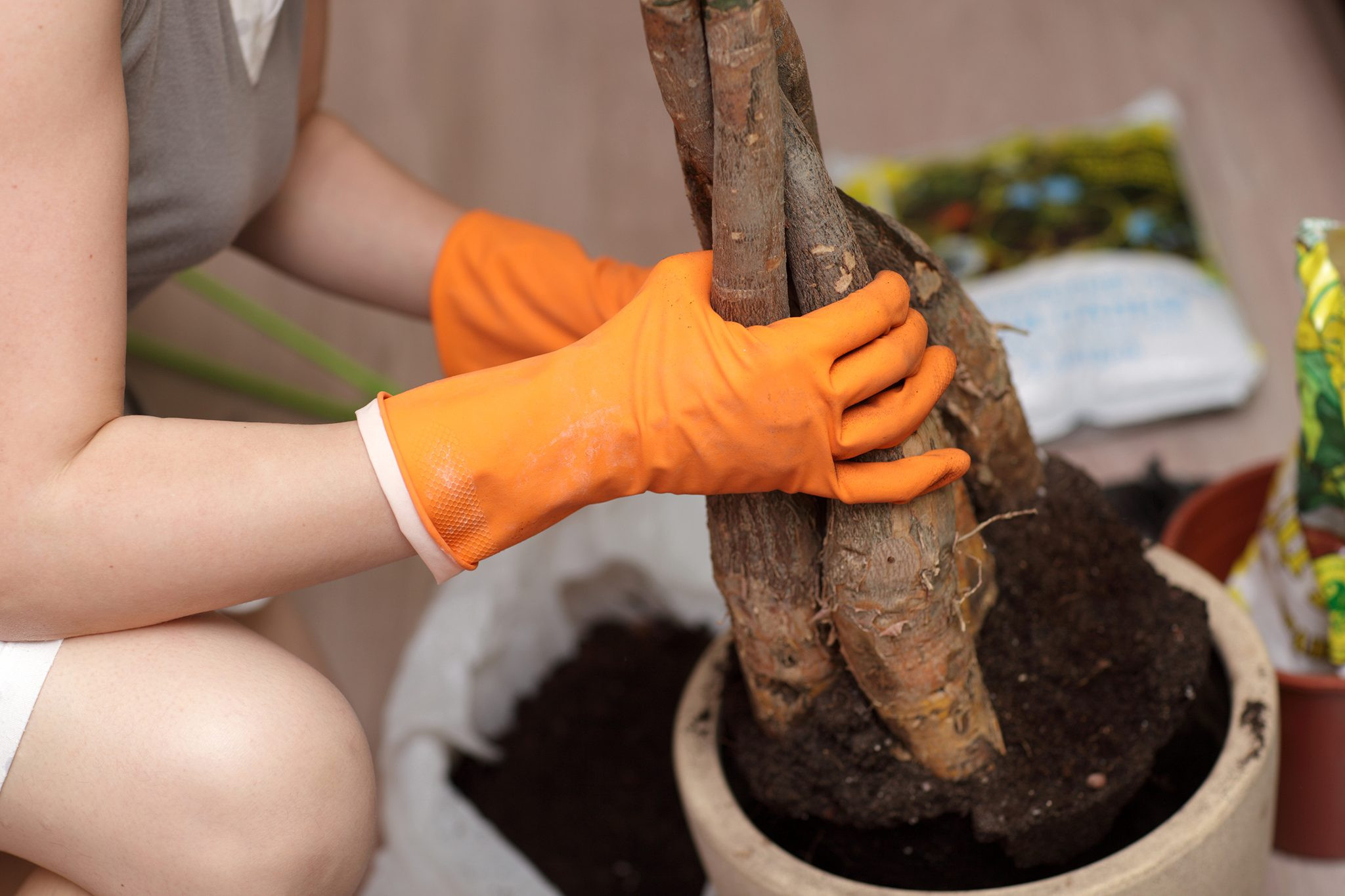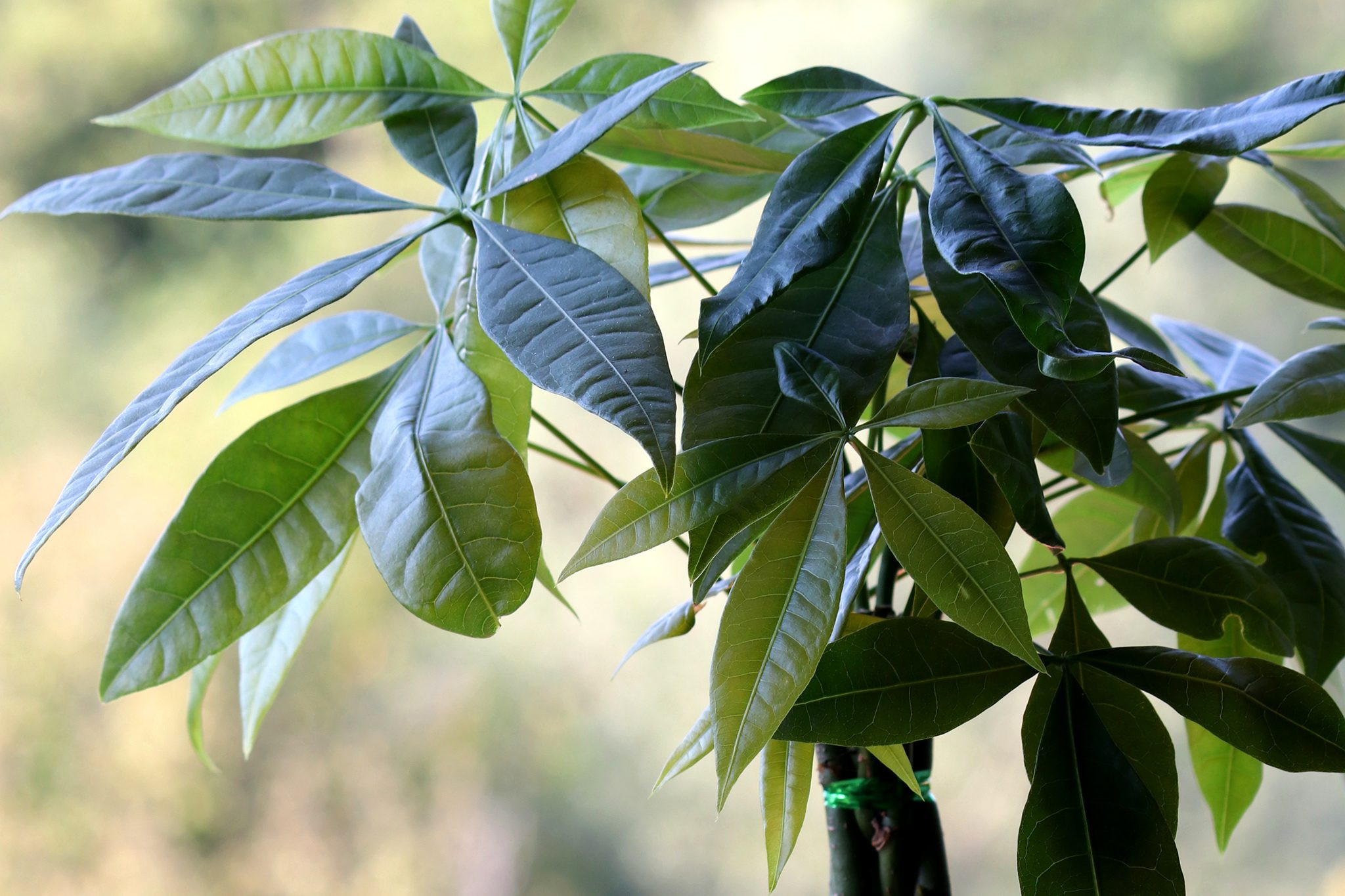The Pachira Money Tree, or Pachira aquatica, is a popular houseplant cherished for its braided trunk and vibrant green foliage, believed to bring good luck and prosperity. Fortunately, caring for a Pachira Money Tree is quite straightforward, making it a delightful addition to any home or office. With the right conditions, your money tree will flourish, adding a touch of greenery and positive energy to your space.
Ideal Location for Your Pachira Money Tree
 Pachira aquatica, Money tree. Getty Images.
Pachira aquatica, Money tree. Getty Images.
Pachira aquatica thriving in bright, indirect light, showcasing optimal money tree plant care.
Finding the perfect spot is crucial for successful Pachira Money Tree Care. These plants thrive in bright, indirect sunlight. Direct, harsh sunlight can scorch their delicate leaves, so it’s best to position them near an east or west-facing window where they receive filtered light. A north-facing window might also work if the light is sufficiently bright.
Temperature is another key factor. Money trees are happiest in average room temperatures, ideally between 65-75°F (18-24°C). Avoid placing them near drafts, heaters, or air conditioners, as sudden temperature fluctuations can stress the plant.
Humidity is also beneficial for Pachira aquatica. Native to tropical regions, they appreciate a moderately humid environment. If your home air is dry, especially during winter, consider increasing humidity around your money tree.
Planting and Repotting Your Money Tree
 A woman relocates pachira aquatica plant at home
A woman relocates pachira aquatica plant at home
Repotting a Pachira aquatica, essential step in money tree plant care for continued growth.
When you first bring your money tree home, it usually won’t need immediate repotting. They are often content in their original pots for a while. However, if you notice roots starting to emerge from the drainage holes or circling densely at the soil surface, it’s time to repot. Spring is generally the best time for repotting your Pachira money tree, as it’s the start of their active growing season.
Choose a pot that is only slightly larger than the current one, as excessive space can lead to waterlogged soil. Ensure the pot has good drainage holes. Use a well-draining potting mix, such as a peat-free cactus or houseplant blend. These mixes provide the right balance of drainage and moisture retention that Pachira aquatica prefers. Gently remove the money tree from its old pot, loosen any circling roots, and place it in the new pot, filling around it with fresh potting mix. Water thoroughly after repotting.
Watering Your Pachira Money Tree
 Pachira aquatica or Money Tree
Pachira aquatica or Money Tree
Close-up of a Pachira aquatica, highlighting proper watering techniques for money tree plant care.
Proper watering is crucial for healthy Pachira money tree care. Overwatering is a common mistake and can be detrimental to your plant. Money trees are somewhat drought-tolerant because they store water in their swollen trunks. Therefore, it’s better to err on the side of underwatering than overwatering.
Water your Pachira money tree thoroughly only when the top 2-3 inches (5-8 cm) of soil feel dry to the touch. Insert your finger into the soil to check moisture levels. When you water, water deeply until water drains out of the drainage holes, ensuring the entire root ball is moistened. Always allow excess water to drain away and never let your money tree sit in standing water, as this can lead to root rot. Reduce watering frequency during the winter months when the plant’s growth naturally slows down.
Maintaining Humidity for Pachira Aquatica
As mentioned, Pachira money trees appreciate humidity. If your home is dry, especially during winter heating months, you can increase humidity in several ways. Misting the leaves regularly with lukewarm water can provide temporary humidity. Placing your money tree on a pebble tray filled with water is another effective method. As the water evaporates, it increases the humidity around the plant. Grouping plants together can also help create a more humid microclimate. For consistent humidity, consider using a humidifier, especially if you live in a particularly dry climate.
Fertilizing Your Money Tree
To support healthy growth, fertilize your Pachira money tree during the active growing season, which is spring and summer. Use a balanced liquid houseplant fertilizer diluted to half strength, and feed your plant every 4-6 weeks. Avoid fertilizing during the fall and winter months when growth slows down, as this can lead to salt build-up in the soil.
Pruning and Shaping Your Pachira Money Tree
Pachira money trees are relatively fast growers and can become quite tall. Pruning can help maintain the desired shape and size of your plant. You can prune your money tree in late winter or early spring before new growth begins. Pinch back new growth tips to encourage bushier growth and control height. You can also remove any dead, damaged, or yellowing leaves at any time.
Propagating Your Pachira Money Tree
Propagating a money tree is a rewarding way to expand your green collection. Stem cuttings are the easiest method for Pachira money tree propagation. In late spring or summer, take stem cuttings that are about 4-6 inches (10-15 cm) long, ensuring each cutting has a few leaves. Place the cuttings in water, ensuring at least an inch or two of the stem is submerged. Change the water every few days. Once roots develop, usually within a few weeks, plant the cuttings in small pots filled with well-draining potting mix.
Common Issues and Problem Solving for Pachira Money Trees
Leaf drop can occur if your money tree is moved to a new location, as they are sensitive to environmental changes. Try to keep your plant in a stable spot once it’s happy. Overwatering is a more frequent cause of leaf drop and yellowing leaves. Allow the soil to dry out between waterings. Yellowing leaves can also indicate overwatering or, less commonly, underwatering. Check the soil moisture to determine the cause.
Brown patches on leaves may suggest sunburn. Move your plant away from direct sunlight. Pests like mealybugs and scale insects can sometimes affect money trees. Inspect your plant regularly for any signs of infestation. Mealybugs appear as white, cottony masses, while scale insects are small, brown, shell-like bumps. Wipe away pests with a damp cloth or cotton swab dipped in insecticidal soap or neem oil.
Buying Advice for a Healthy Money Tree
When purchasing a Pachira money tree, inspect the plant carefully. Check for healthy, green leaves and avoid plants with yellowing or brown leaves, which could indicate stress or disease. Look for signs of pests on the leaves and stems. Ensure the soil is not waterlogged and the pot has proper drainage. A healthy money tree will have a vibrant green color and firm stems.
With proper Pachira money tree care, you can enjoy this beautiful and auspicious plant for years to come. By providing the right light, water, humidity, and occasional fertilization, you’ll be rewarded with a thriving money tree that enhances your indoor environment.